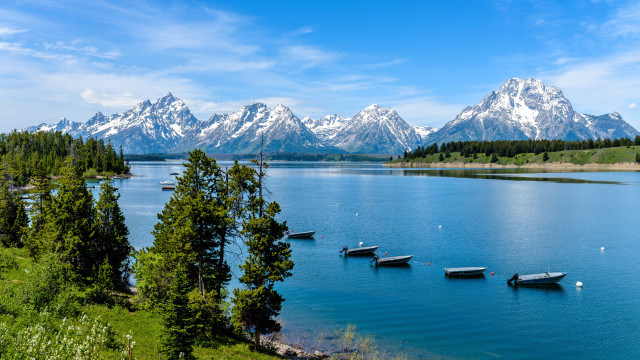






























See Also
See Again
© Shutterstock
0 / 31 Fotos
São Miguel - The best views of Lagoa do Fogo, the island's "fire lake," can be admired from the scenic Pico do Barrosa viewpoint.
© iStock
1 / 31 Fotos
São Miguel - Vale das Furnas is a geothermal hot spot where boiling springs and fumaroles bubble up to the surface.
© iStock
2 / 31 Fotos
São Miguel - The largest town in the Azores, Ponta Delgada is noted for its Portas da Cidade (pictured)—the city gates, built in 1783.
© iStock
3 / 31 Fotos
São Miguel
- The highlight of the Azores' festival calendar is the magical Senhor Santo Cristo dos Milagres, centered around Ponta Delgada's 16th-century convent.
© Shutterstock
4 / 31 Fotos
São Miguel - Europe's only tea plantation is the Chá Gorreana, founded in 1883.
© Shutterstock
5 / 31 Fotos
São Miguel - Vila Franca do Campo's spectacular Ilhéu da Vila Franca is the location for the annual Red Bull cliff diving competition.
© Shutterstock
6 / 31 Fotos
São Miguel - Picture-perfect in bright sunshine, the stunning Caldeira das Sete Cidades is arguably the most visited—and most photographed—of all the islands' natural wonders. The lakes are best viewed from the Boca do Inferno viewpoint.
© Shutterstock
7 / 31 Fotos
São Miguel - Scenic Vale das Furnas is worth a whole day of your time exploring. Be sure to try the Cozido das Furnas, a traditional dish cooked in sealed pots that are then lowered into the hot, volcanic soil.
© Shutterstock
8 / 31 Fotos
Faial
- Horta's engaging museum is housed within the landmark 18th-century former Jesuit College building.
© Getty Images
9 / 31 Fotos
Faial
- Faial's must-see destination is the remarkable Capelinhos Volcano. The moon-like landscape is the result of a violent 1957-58 eruption that changed the shape of the island's western tip.
© Getty Images
10 / 31 Fotos
Faial - As a blustery mid-Atlantic archipelago, the Azores islands are known for their windmills. Pictured here is one typical of Faial.
© iStock
11 / 31 Fotos
Faial
- The Marina da Horta is celebrated for the "calling cards" daubed on the marina walls by visiting yacht crews.
© Getty Images
12 / 31 Fotos
Flores - One of the island's most spectacular natural wonders is the Rocha dos Bordões, a huge outcrop of basalt rock etched with vertical columns that resemble a prehistoric pipe organ.
© iStock
13 / 31 Fotos
Flores
- Remote Flores, the westernmost island in the Azores archipelago, regales the eye with a collection of outstanding crater lakes.
© Shutterstock
14 / 31 Fotos
Flores - The spectacular Cascata da Ribeira Grande waterfall adds drama to an already alluring environment.
© iStock
15 / 31 Fotos
Terceira - The island's beautiful Renaissance Old Town is a UNESCO World Heritage Site.
© iStock
16 / 31 Fotos
Terceira - Angra do Heroísmo's 18th-century Misericordia Church is one of the islands' most recognized historic buildings.
© iStock
17 / 31 Fotos
São Jorge
- Rich, tangy cheeses and some of the best walking trails in the Azores are two reasons why visitors are attracted to this island. Another reason is the chance to admire São Jorge's unique coastal plains, the landmark "fajãs."
© Shutterstock
18 / 31 Fotos
Pico - Pico Island is named after its impressive volcanic peak. At 2,351 m (7,708 ft), Mount Pico is Portugal's highest mountain.
© iStock
19 / 31 Fotos
Pico - Pico is known for its world-class whale watching. Some 28 species of cetaceans have been spotted off the island.
© iStock
20 / 31 Fotos
A gentle giant - The most rewarding time to enjoy whale watching in the Azores is throughout the warm summer months. However, the sperm whale is a much-loved, year-round resident.
© iStock
21 / 31 Fotos
Pico - Besides whale watching, Pico is noted for its wines. The Landscape of Pico Island Vineyard Culture is a UNESCO World Heritage Site.
© iStock
22 / 31 Fotos
Pico - The island's vineyards are unique, hemmed in as they are by basalt walls, or "currais."
© iStock
23 / 31 Fotos
Graciosa - As if to illustrate the islands' centuries-old whaling heritage, the naturally formed Ilhéu da Baleia takes the form of a huge, floating cetacean.
© Shutterstock
24 / 31 Fotos
Scrimshaw - The hunting of whales in the Azores ceased in 1988, but the island's whaling heritage is imaginatively preserved through scrimshaw, the art of engraving on to whale bone and teeth. Note that the import-export of this material is banned.
© iStock
25 / 31 Fotos
Religious architecture - The islands' churches and chapels are unique for their appearance, built using basalt stone and shimmering in brilliant whitewash.
© iStock
26 / 31 Fotos
Birdlife
- The Azores is a bird-watcher's paradise. The islands offer superb opportunities for ornithologists to observe species like Cory's shearwater. Another bird to look out for is the rare Azores bullfinch.
© Shutterstock
27 / 31 Fotos
Exploring underwater - The Azores are anchored in waters that offer some of the best diving conditions in the world. Shark, manta ray (pictured) and dusky grouper are among the denizens of the deep waiting to greet you.
© iStock
28 / 31 Fotos
Island cuisine - Sampling traditional Azorean gastronomy is always one of the highlights of exploring the archipelago. Lapas grelhadas (grilled limpets) is a year-round delicacy.
© Shutterstock
29 / 31 Fotos
Island cuisine
- Another favorite dish is polvo guisado, a dish of octopus tentacles stewed in wine, onions, and a red pepper paste. See also: Go away! Countries that want to reduce the number of tourists
© iStock
30 / 31 Fotos
© Shutterstock
0 / 31 Fotos
São Miguel - The best views of Lagoa do Fogo, the island's "fire lake," can be admired from the scenic Pico do Barrosa viewpoint.
© iStock
1 / 31 Fotos
São Miguel - Vale das Furnas is a geothermal hot spot where boiling springs and fumaroles bubble up to the surface.
© iStock
2 / 31 Fotos
São Miguel - The largest town in the Azores, Ponta Delgada is noted for its Portas da Cidade (pictured)—the city gates, built in 1783.
© iStock
3 / 31 Fotos
São Miguel
- The highlight of the Azores' festival calendar is the magical Senhor Santo Cristo dos Milagres, centered around Ponta Delgada's 16th-century convent.
© Shutterstock
4 / 31 Fotos
São Miguel - Europe's only tea plantation is the Chá Gorreana, founded in 1883.
© Shutterstock
5 / 31 Fotos
São Miguel - Vila Franca do Campo's spectacular Ilhéu da Vila Franca is the location for the annual Red Bull cliff diving competition.
© Shutterstock
6 / 31 Fotos
São Miguel - Picture-perfect in bright sunshine, the stunning Caldeira das Sete Cidades is arguably the most visited—and most photographed—of all the islands' natural wonders. The lakes are best viewed from the Boca do Inferno viewpoint.
© Shutterstock
7 / 31 Fotos
São Miguel - Scenic Vale das Furnas is worth a whole day of your time exploring. Be sure to try the Cozido das Furnas, a traditional dish cooked in sealed pots that are then lowered into the hot, volcanic soil.
© Shutterstock
8 / 31 Fotos
Faial
- Horta's engaging museum is housed within the landmark 18th-century former Jesuit College building.
© Getty Images
9 / 31 Fotos
Faial
- Faial's must-see destination is the remarkable Capelinhos Volcano. The moon-like landscape is the result of a violent 1957-58 eruption that changed the shape of the island's western tip.
© Getty Images
10 / 31 Fotos
Faial - As a blustery mid-Atlantic archipelago, the Azores islands are known for their windmills. Pictured here is one typical of Faial.
© iStock
11 / 31 Fotos
Faial
- The Marina da Horta is celebrated for the "calling cards" daubed on the marina walls by visiting yacht crews.
© Getty Images
12 / 31 Fotos
Flores - One of the island's most spectacular natural wonders is the Rocha dos Bordões, a huge outcrop of basalt rock etched with vertical columns that resemble a prehistoric pipe organ.
© iStock
13 / 31 Fotos
Flores
- Remote Flores, the westernmost island in the Azores archipelago, regales the eye with a collection of outstanding crater lakes.
© Shutterstock
14 / 31 Fotos
Flores - The spectacular Cascata da Ribeira Grande waterfall adds drama to an already alluring environment.
© iStock
15 / 31 Fotos
Terceira - The island's beautiful Renaissance Old Town is a UNESCO World Heritage Site.
© iStock
16 / 31 Fotos
Terceira - Angra do Heroísmo's 18th-century Misericordia Church is one of the islands' most recognized historic buildings.
© iStock
17 / 31 Fotos
São Jorge
- Rich, tangy cheeses and some of the best walking trails in the Azores are two reasons why visitors are attracted to this island. Another reason is the chance to admire São Jorge's unique coastal plains, the landmark "fajãs."
© Shutterstock
18 / 31 Fotos
Pico - Pico Island is named after its impressive volcanic peak. At 2,351 m (7,708 ft), Mount Pico is Portugal's highest mountain.
© iStock
19 / 31 Fotos
Pico - Pico is known for its world-class whale watching. Some 28 species of cetaceans have been spotted off the island.
© iStock
20 / 31 Fotos
A gentle giant - The most rewarding time to enjoy whale watching in the Azores is throughout the warm summer months. However, the sperm whale is a much-loved, year-round resident.
© iStock
21 / 31 Fotos
Pico - Besides whale watching, Pico is noted for its wines. The Landscape of Pico Island Vineyard Culture is a UNESCO World Heritage Site.
© iStock
22 / 31 Fotos
Pico - The island's vineyards are unique, hemmed in as they are by basalt walls, or "currais."
© iStock
23 / 31 Fotos
Graciosa - As if to illustrate the islands' centuries-old whaling heritage, the naturally formed Ilhéu da Baleia takes the form of a huge, floating cetacean.
© Shutterstock
24 / 31 Fotos
Scrimshaw - The hunting of whales in the Azores ceased in 1988, but the island's whaling heritage is imaginatively preserved through scrimshaw, the art of engraving on to whale bone and teeth. Note that the import-export of this material is banned.
© iStock
25 / 31 Fotos
Religious architecture - The islands' churches and chapels are unique for their appearance, built using basalt stone and shimmering in brilliant whitewash.
© iStock
26 / 31 Fotos
Birdlife
- The Azores is a bird-watcher's paradise. The islands offer superb opportunities for ornithologists to observe species like Cory's shearwater. Another bird to look out for is the rare Azores bullfinch.
© Shutterstock
27 / 31 Fotos
Exploring underwater - The Azores are anchored in waters that offer some of the best diving conditions in the world. Shark, manta ray (pictured) and dusky grouper are among the denizens of the deep waiting to greet you.
© iStock
28 / 31 Fotos
Island cuisine - Sampling traditional Azorean gastronomy is always one of the highlights of exploring the archipelago. Lapas grelhadas (grilled limpets) is a year-round delicacy.
© Shutterstock
29 / 31 Fotos
Island cuisine
- Another favorite dish is polvo guisado, a dish of octopus tentacles stewed in wine, onions, and a red pepper paste. See also: Go away! Countries that want to reduce the number of tourists
© iStock
30 / 31 Fotos
The Azores: Europe's hidden paradise
Explore the Portuguese mid-Atlantic archipelago
© Shutterstock
Scattered like emeralds in the mid-Atlantic, the nine islands that make up the Azores archipelago—São Miguel, Santa Maria, Terceira, Graciosa, São Jorge, Pico, Faial, Flores, and Corvo—are rewarding destinations in and of themselves.
Celebrated for their stunning natural beauty, these Portuguese islands offer a wealth of outdoor adventure and nature tourism options. The only problem is choosing which island to explore first.
Browse the gallery for some visitor highlights and ideas of where to go and what to do.
RECOMMENDED FOR YOU























MOST READ
- Last Hour
- Last Day
- Last Week








